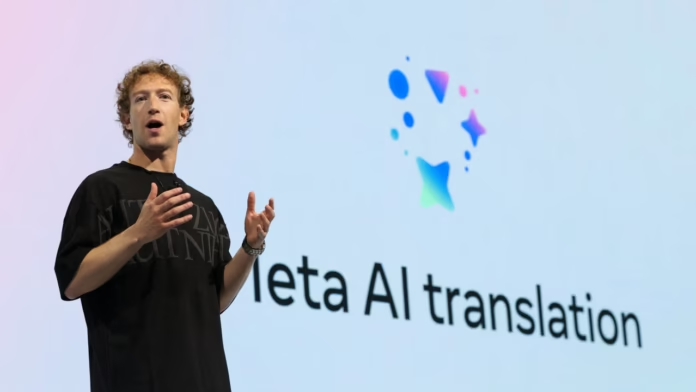Meta Platforms is reshaping its artificial intelligence (AI) strategy yet again. In just six months, the company has announced its fourth restructuring, underlining CEO Mark Zuckerberg’s aggressive push toward artificial general intelligence (AGI) — advanced systems that could surpass human intelligence.
Super intelligence Labs Re-organized into Four Units
Meta’s primary AI hub, Super intelligence Labs, is being divided into four key groups:
TBD Lab: An experimental division for future projects.
Products Team: Focused on tools like the Meta AI assistant.
Infrastructure Team: Responsible for building scalable computing systems.
FAIR (Fundamental AI Research) Lab: Dedicated to long-term research goals.
This structure balances immediate product needs with future innovation, ensuring Meta keeps pace with the competitive AI landscape.
Zuckerberg’s AGI Vision

Mark Zuckerberg is betting heavily on AGI as the next big frontier. Unlike traditional AI that powers chatbots or content recommendations, AGI aims to develop machines capable of complex reasoning and problem-solving.
The move also signals Meta’s intent to diversify beyond advertising, opening up new revenue opportunities driven by AI breakthroughs.
Billions Invested in Data Centers
To fuel its AI expansion, Meta is investing at an unprecedented scale. The company has partnered with PIMCO and Blue Owl Capital to raise $29 billion for new data centers in Louisiana.
In July, Zuckerberg revealed plans to spend hundreds of billions of dollars building advanced AI infrastructure, including massive data centers designed to handle intensive model training and deployment.
Rising Costs Challenge Growth
These ambitions come with steep financial challenges. Meta recently lifted its annual capital expenditure forecast to $66–72 billion. Costs are being driven by:
Data center construction for AI infrastructure.
High researcher salaries, as Meta competes with rivals by offering premium compensation packages.
The company has also warned that 2026 expenses will rise faster than in 2025, reflecting the ongoing burden of its AI-first strategy.
Competing in Silicon Valley’s AI Race
![]()
Meta’s repeated restructures reflect the high-stakes AI rivalry in Silicon Valley. Competitors like OpenAI, Google, and Anthropic are racing to develop powerful generative AI models, each vying for dominance in the market.
By doubling down on AGI and investing heavily in infrastructure, Meta hopes to secure a leading role in what many believe is the next era of computing.
Conclusion

Meta’s fourth AI overhaul in six months highlights the urgency behind Zuckerberg’s push for AGI. With Superintelligence Labs split into specialized groups and billions allocated to infrastructure, Meta is betting its future on AI.
The challenge will be delivering groundbreaking innovation while managing rising costs and intense competition. If successful, Meta could emerge as one of the key winners in the global AI race.


